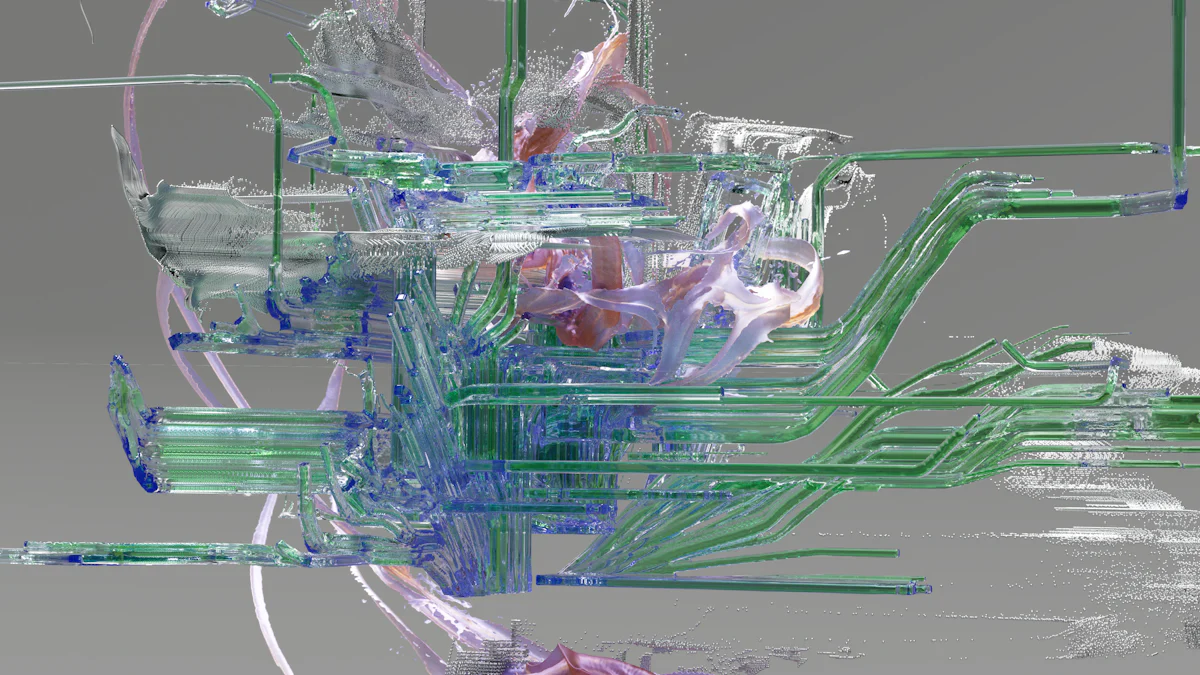
The Great Tech Showdown: An Introduction
Setting the Stage for a Tech Tug-of-War
As I delved into the realm of AI-written text, I was immediately struck by its pervasive presence in various domains. My initial encounter with AI-generated content left me both intrigued and apprehensive. The sheer volume of AI-integrated marketing operations, as indicated by a survey, is staggering. Technology has undeniably become an integral part of modern marketing strategies, with AI-Written Text playing a significant role in content creation.
The quest for authenticity and creativity amidst this technological landscape became my driving force. Businesses are increasingly investing in AI technologies, with over 60% of respondents acknowledging its use in marketing operations. This surge reflects a growing reliance on technology to streamline job processes and improve productivity, as highlighted by business owners’ beliefs in AI’s potential.
The Contenders: Humanizing vs. Detecting Tech
In this tech showdown, two distinct categories emerged as the primary contenders: humanizing technology and detecting technology. These categories represent the dual challenges faced when dealing with AI-written content.
A brief overview of the technologies involved reveals that AI-Written Text has permeated various aspects of content creation and analysis. Marketers are utilizing AI tools to generate basic content, while L&D professionals believe generative AI tools significantly empower personalized learning experiences.
The battle lines are drawn between technologies designed to humanize AI-generated text and those aimed at detecting such content. This dichotomy underscores the need to balance creativity and originality with the ability to discern between human-written and AI-generated text effectively.
Round 1: Discovering Technology that Humanizes AI-Written Text
My first foray into the realm of AI humanization was an eye-opening experience that reshaped my approach to content creation. As I sought to infuse a genuine human touch into AI-generated text, I encountered a myriad of tools designed to bridge the gap between artificial and authentic expression.
My First Foray into AI Humanization
In my quest to humanize AI-written text, I embarked on a journey of exploration and experimentation. Selecting the right tools was paramount, and two standout platforms, Zerogpt and Stealthwriter emerged as my primary companions in this endeavor. These innovative solutions promised to transform mundane AI-generated content into engaging, unique text seamlessly.
The trial and error process unfolded as I delved into these tools, navigating their interfaces and functionalities with curiosity and anticipation. Each platform offered distinct features and approaches to infusing human-like qualities into AI-written text, presenting me with a diverse array of options for enhancing content authenticity.
Surprising Discoveries and Hilarious Outcomes
Amidst my exploration, I encountered surprising discoveries and even some hilarious outcomes along the way. There were instances when the AI seemed to try too hard to sound human, resulting in comically awkward phrasing that veered off-course from its intended tone. These moments served as lighthearted reminders of the intricate balance between technological precision and genuine human expression.
Learning from these mishaps became an integral part of my journey toward mastering technology that humanizes AI-written text. Embracing the unexpected quirks and idiosyncrasies of these tools allowed me to refine my approach, gaining valuable insights into effectively leveraging them for authentic content creation.
As user testimonials further anchored the reputation of AI Humanizer, customers from various niches—ranging from digital marketing to content creation—applauded the tool for its efficacy in refining AI content with a convincing human touch. Creating genuine and human-like text from AI-generated content is essential in today’s digital age, where content authenticity significantly impacts reader engagement and trust.
Meeting audience expectations is crucial; certain audiences may have a preference for content that feels more human in nature. By humanizing AI-generated content, it can better align with the expectations and preferences of the target audience. This contributes significantly to AI-to-human text quality by creating a perception of authenticity and expertise, which can help build trust and credibility with readers.
The process of discovering technology that humanizes AI-written text not only transformed my approach but also enriched my understanding of the pivotal role played by such advancements in modern content creation.
Round 2: Entering the Arena with Technology that Detects AI-Written Text
The Detective Work Begins
As I transitioned into the realm of technology designed to detect AI-written text, a new set of challenges and revelations awaited. The quest to discern between human-crafted and AI-generated content led me to explore cutting-edge detection tools, each equipped with unique capabilities.
Choosing My Detectives: CrossPlag and Originality.ai
In my pursuit of effective AI-written text detection, I carefully selected two prominent detectives for this investigative endeavor: CrossPlag and Originality.ai. These advanced platforms boasted sophisticated algorithms and extensive databases, empowering them to scrutinize textual content with unparalleled precision. The decision to enlist these digital sleuths stemmed from their reputation for delivering reliable results in identifying AI-generated text.
Setting Up the Investigation
The initial phase of my exploration involved setting up the investigation parameters within each detection tool. Both CrossPlag and Originality.ai offered intuitive interfaces that facilitated seamless input of textual data for analysis. Leveraging their user-friendly features, I inputted a diverse range of content samples, including AI-generated text and human-authored compositions, to gauge their detection prowess comprehensively.
The Plot Thickens: Unexpected Twists
As I delved deeper into the detective work, unexpected twists emerged, shedding light on the intricacies of AI-written text detection. It became evident that these tools operated by scrutinizing textual elements indicative of AI generation, such as repetitive patterns and formulaic language. However, an intriguing revelation surfaced during my investigation—despite their advanced capabilities, both platforms encountered challenges in detecting ChatGPT-generated text that had been subtly rearranged by humans using paraphrasing tools.
When the Detector Gets Confused
The limitations of these detection tools came to the forefront when faced with cleverly obfuscated AI-generated content. This discovery underscored the evolving nature of AI’s impact on content creation and analysis, posing a formidable challenge for existing detection technologies. The ability of students or content creators to slightly adapt AI-generated text to evade detection raised critical concerns about maintaining authenticity in written content.
Adapting My Strategy
Armed with newfound insights into the intricacies of AI-written text detection, I adapted my approach to strike a balance between leveraging AI technologies and preserving authentic human expression. Recognizing the evolving landscape of content creation prompted me to explore innovative strategies aimed at enhancing textual authenticity while harnessing the potential of generative AI tools effectively.
With each twist and turn in this technological journey, I gained a deeper understanding of the dynamic interplay between creativity, originality, and technological advancements in modern content creation.
The Final Verdict: Which Technology Wins in My Book?
Weighing the Pros and Cons
As I reflect on my journey through the realms of technology that humanizes and detects AI-written text, it becomes imperative to weigh the pros and cons of each approach. Both categories of technology present unique advantages and limitations, shaping their impact on modern content creation.
What I Loved About Each Technology
The allure of technology that humanizes AI-written text lies in its ability to infuse genuine human expression into AI-generated content. AI Humanizer and BypassGPT stood out as formidable allies in this pursuit, offering a diverse array of features aimed at enhancing textual authenticity. The seamless transformation of mundane AI-generated content into engaging, unique text was a testament to the efficacy of these tools. User testimonials further anchor AI Humanizer’s reputation, with customers from various niches—ranging from digital marketing to content creation—applauding the tool for its efficacy in refining AI content with a convincing human touch.
On the other hand, technology designed to detect AI-written text such as CrossPlag and Originality.ai showcased remarkable capabilities in scrutinizing textual content for signs of artificial generation. Their sophisticated algorithms and extensive databases empowered them to identify subtle patterns indicative of AI origin. Despite encountering challenges in detecting subtly modified AI-generated text, these detection tools remain invaluable assets in upholding content authenticity.
The Challenges and Limitations
However, both categories of technology are not without their limitations. While humanizing technology excels in infusing authentic expression into AI-generated text, it occasionally grapples with overemphasizing human-like qualities, leading to comically awkward phrasing. This underscores the need for continuous refinement in balancing technological precision with genuine human expression.
Similarly, detection technology faces challenges when confronted with subtly modified AI-generated text that evades traditional scrutiny methods. The evolving nature of AI’s impact on content creation poses a formidable challenge for existing detection technologies, necessitating ongoing adaptation and innovation.
And the Winner Is…
After careful consideration and introspection, my personal preference leans toward technology that detects AI-written text emerging as the winner in my book. While both categories offer valuable contributions to modern content creation, the ability to discern between human-crafted and AI-generated content is paramount in upholding authenticity.
The dynamic landscape of content creation demands robust measures to preserve originality while harnessing the potential of generative AI tools effectively. By embracing technology that detects AI-written text, we can navigate this landscape with heightened vigilance against artificially generated content masquerading as authentic human expression.
Wrapping Up the Battle: My Final Thoughts
Lessons Learned from the Tech Tug-of-War
Throughout this exhilarating exploration of technology that humanizes and detects AI-Written Text, profound lessons have emerged, shaping my perspective on the ethical implications and practical considerations surrounding AI content tools.
The Importance of Human Touch in AI
The use of AI content tools raises ethical concerns about plagiarism, authenticity, and the responsibilities of writers. As I navigated the realms of technology that humanizes and detects AI-written text, it became increasingly evident that preserving a genuine human touch in content creation is paramount. The allure of technology that humanizes AI-written text lies in its ability to infuse genuine human expression into AI-generated content. However, this endeavor occasionally grapples with overemphasizing human-like qualities, leading to comically awkward phrasing. Balancing technological precision with authentic human expression remains a critical challenge in leveraging AI content tools effectively.
The Future of AI-Written Text and Detection
The future landscape of AI-written text and detection presents a dynamic interplay between technological advancements and ethical considerations. The increasing use of AI content tools has raised ethical concerns regarding the authenticity and originality of written content. While these technologies offer valuable support during one’s research and writing journey, they cannot replace human expertise entirely. Responsible use of AI-generated content refers to the ethical obligation of individuals utilizing these tools to ensure that the content produced is used judiciously and in compliance with applicable laws and ethical guidelines.
Signing Off: A Look to the Future
As I conclude this captivating journey through the realms of technology that humanizes and detects AI-Written Text, my hopes for AI and writing technology are anchored in responsible innovation. The evolving landscape demands robust measures to preserve originality while harnessing the potential of generative AI tools effectively. My final word of advice to fellow tech explorers is to approach these advancements with a blend of curiosity, vigilance, and ethical mindfulness. Embracing technology while upholding authenticity will undoubtedly shape the future trajectory of modern content creation.
